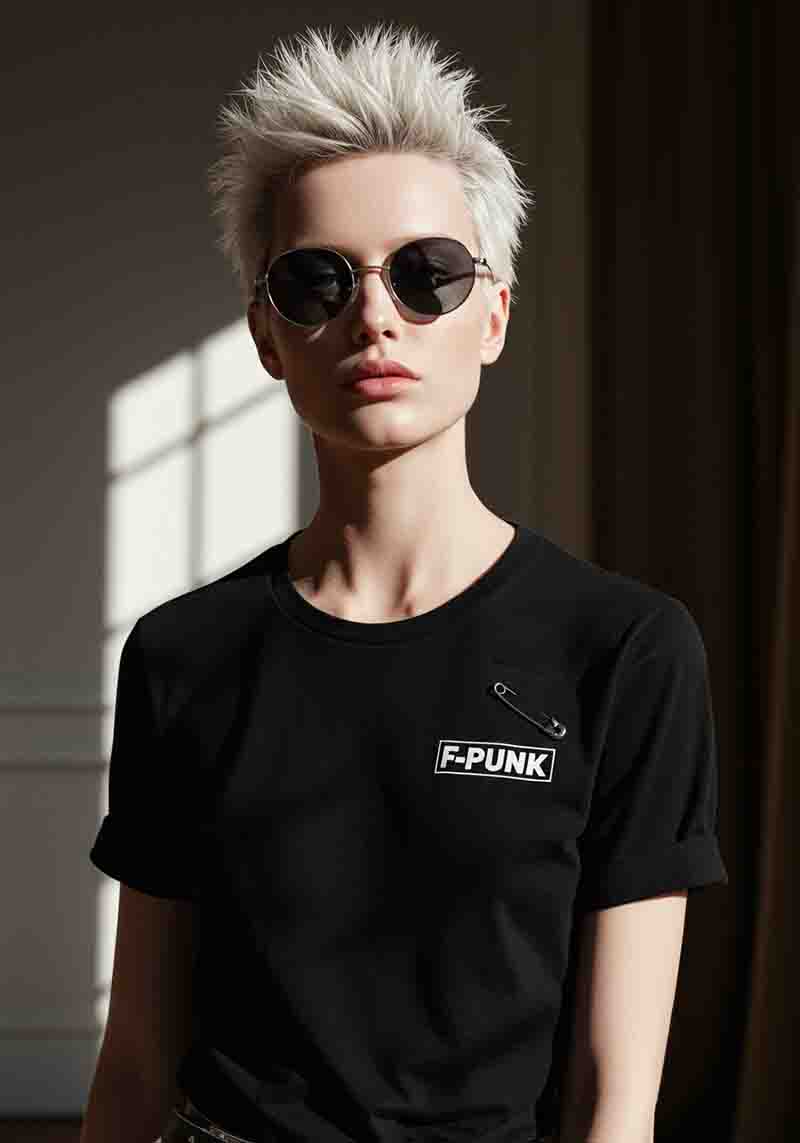Revolt in Style: Punk it up
Born out of the gritty streets of 1970s urban landscapes, punk fashion ignited a revolution, tearing down the barriers of conformity and embracing the raw, unfiltered energy of the underground music scene. Key elements of Punk fashion include distressed clothing, leather jackets, band patches, safety pins, and combat boots.
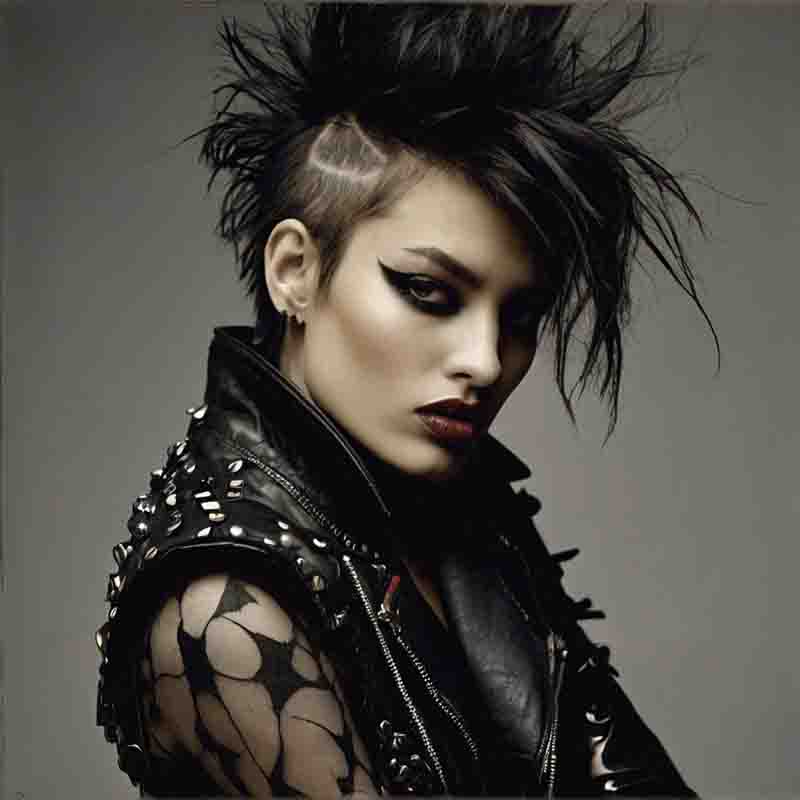
Influenced by bands like the Sex Pistols, The Clash, and The Ramones, early punks rejected the polished aesthetics of mainstream fashion in favor of a DIY ethos and a raw, edgy look.
The roots of punk fashion can be traced back to the underground music and counter culture scene of the 1970s, particularly in cities like London and New York City.
Ripped jeans, leather jackets, and safety pins became iconic symbols of the punk rock movement, reflecting a desire to challenge authority and disrupt the status quo.
While punk fashion initially emerged as a subversive movement on the fringes of society, it has since infiltrated mainstream culture in various ways.
Designers and brands right up to the haute couture houses in Paris have embraced the punk aesthetic and incorporated elements of rebellion and DIY into their collections.
Punk-inspired fashion has been featured on runways, in magazines, and on the red carpet, cementing its status as a powerful and influential force in the fashion world.
Despite its origins in the 1970s, punk fashion continues to evolve and adapt to the changing tastes and attitudes of each new generation.
Whether you're a seasoned punk enthusiast or just discovering the rebellious spirit of punk fashion, embrace the ethos, break the rules, and rock your punk-inspired look with confidence.
Punk fashion has its roots in the underground movements of the 1970s and was a visual expression of the dissatisfaction and disillusionment of marginalised population groups.
12 Essential Facts about Punk Fashion
-
Origins: Punk fashion emerged in the mid-1970s as a visual expression of the punk rock music scene, particularly in cities like London and New York City.
-
Rebellion: Punk fashion is characterized by its rebellious and anti-establishment ethos, reflecting a rejection of mainstream culture and societal norms.
-
DIY Ethos: A key aspect of punk fashion is its DIY (do-it-yourself) ethic, where individuals create their own clothing, accessories, and hairstyles using whatever materials are available.
-
Distressed Clothing: Distressed clothing, featuring ripped jeans, torn t-shirts, and frayed edges, is a signature style of punk fashion, symbolizing rebellion and non-conformity.
-
Iconic Symbols: Punk fashion incorporates iconic symbols such as safety pins, leather jackets, combat boots, and Mohawk hairstyles, which serve as visual markers of punk identity.
-
Anarchy and Political Statements: Punk fashion often includes political slogans, anarchic symbols, and subversive imagery, reflecting a desire to challenge authority and provoke social change.
-
Music Influence: Punk fashion is closely linked to punk music, with bands like the Sex Pistols, The Clash, and The Ramones influencing both the aesthetic and attitude of the punk scene.
-
Gender Fluidity: Punk fashion has historically embraced gender fluidity and androgyny, with individuals challenging traditional notions of masculinity and femininity through their clothing choices.
-
Subcultures and Tribes: Punk fashion encompasses a diverse range of subcultures and tribes, each with its own distinctive style and aesthetic, from hardcore punk to glam punk to crust punk.
-
Global Influence: Punk fashion has had a global influence, inspiring subcultures and movements around the world, from the UK and the US to Japan, Brazil, and beyond.
-
Mainstream Adoption: Elements of punk fashion have been co-opted by mainstream fashion designers and brands, leading to the commodification and commercialization of punk aesthetics.
-
Continued Evolution: Despite its origins in the 1970s, punk fashion continues to evolve and adapt, with new generations of punks reinterpreting and reinventing the style to reflect contemporary concerns and cultural influences.
From Mohawks to brightly colored hair, from bondage pants to tartan skirts, punk fashion encompasses a wide range of styles and influences, united by a shared spirit of non-conformity.
Punk Fashion Timeline
Punk fashion emerged in the 1970s as a defiant response to the mainstream fashion of the time.
Bands like the Sex Pistols and The Clash became synonymous with the punk movement, influencing not only music but also fashion.
| Year | Milestone |
|---|---|
| 1970s | Punk fashion emerges as a subculture in London and New York City, characterized by a DIY aesthetic and anti-establishment ethos. |
| 1974 | Vivienne Westwood and Malcolm McLaren re-brand their iconic boutique, now simply called: SEX, in London, showcasing punk-inspired clothing designs and accessories. |
| 1975 | The Sex Pistols, a seminal punk band, debuts in London, sparking the punk music movement and influencing fashion trends. |
| 1977 | Punk fashion gains mainstream attention with the release of the Sex Pistols' album "Never Mind the Bollocks, Here's the Sex Pistols" and their controversial "God Save the Queen" single. |
| 1978 | The punk fashion scene expands globally, with DIY punk aesthetics influencing designers, musicians, and artists around the world. |
| 1980s | Punk fashion evolves, with subgenres like hardcore punk and post-punk emerging, each with its own distinctive style and influences. |
| 1984 | Goth punk fashion emerges as a subculture, blending elements of punk and gothic fashion to create a dark and theatrical style. |
| 1990s | Fashion designer Jean Paul Gaultier incorporates punk-inspired elements into his collections, bringing punk fashion to the forefront of high fashion. |
| 2000s | Punk fashion continues to influence mainstream fashion trends, with designers and brands incorporating punk-inspired elements into their collections. |
| 2010s | DIY punk fashion becomes increasingly popular, with online communities and social media platforms providing a platform for DIY fashion enthusiasts to share their creations. |
| 2020s | Punk fashion remains a symbol of rebellion and self-expression, with new generations embracing its DIY ethos and non-conformist attitude. |
At the heart of punk fashion lies a spirit of rebellion and non-conformity. Distressed clothing, anarchic symbols, and DIY customizations are hallmarks of punk style, embodying a sense of defiance and individuality.
Punk Fashion: Bold Looks for Fearless Individuals
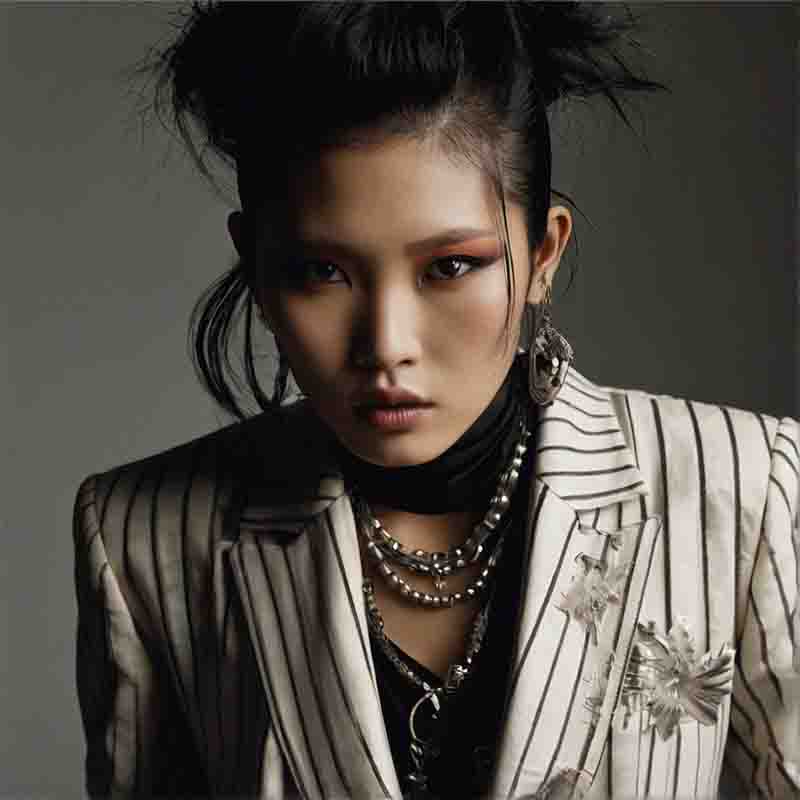
Punk fashion is about expressing one's own identity and beliefs through clothing, hairstyles, and accessories, rather than conforming to external expectations or standards.
Edge of Glory: Punk Fashion Story
In the smoky, dimly lit clubs of New York City and London, a new sound reverberated through the air, setting the stage for a fashion revolution.
The Sex Pistols, The Clash, and other pioneering bands injected a jolt of electricity into the stagnant music scene, sparking a cultural upheaval that would redefine fashion forever.
Punk fashion emerged as a raw, unapologetic expression of dissent, rejecting the polished glamour of mainstream culture in favor of DIY aesthetics and anti-establishment attitude.
Punk Fashion Icons
At the forefront of the punk fashion movement stood visionaries like Vivienne Westwood and Malcolm McLaren, whose iconic designs captured the rebellious spirit of the era.
Westwood's punk manifesto, epitomized by the infamous "Anarchy in the UK" shirt, became a symbol of defiance, challenging societal norms and sparking outrage among the establishment.
With his legendary boutique "SEX", McLaren turned punk fashion into a cultural phenomenon and paved the way for future generations of fashion designers.
Elements of Punk Fashion
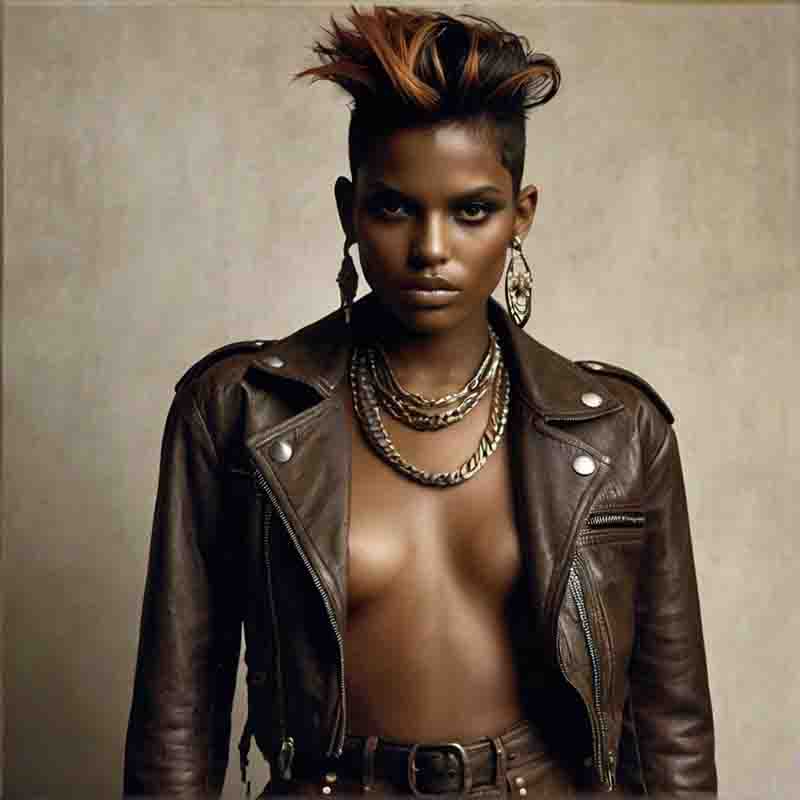
In a world that's constantly trying to box us in, punk fashion reminds us that it's okay to stand out, to be different, and to embrace the raw, unfiltered energy of our true selves.
Central to the punk ethos is a rejection of conformity and a celebration of individuality.
From leather jackets adorned with spikes and studs to ripped jeans and safety pins, punk fashion embraces the DIY aesthetic, inviting individuals to customize their attire with reckless abandon.
Hairstyles become works of art, with Mohawks and shaved heads serving as badges of honor in the punk community.
Punk Fashion Subcultures
Beyond its iconic imagery, punk fashion encompasses a diverse array of subcultures, each with its own unique style and ethos.
Hardcore punk, with its aggressive sound and abrasive fashion, reflects the anger and frustration of urban youth.
Goth style punk, characterized by its dark, brooding aesthetic, explores themes of death and decay, while ska punk infuses the genre with a lively, upbeat energy.
Despite their differences, these subcultures share a common bond, united by their rejection of mainstream culture and embrace of alternative lifestyles.
Punk Fashion Today
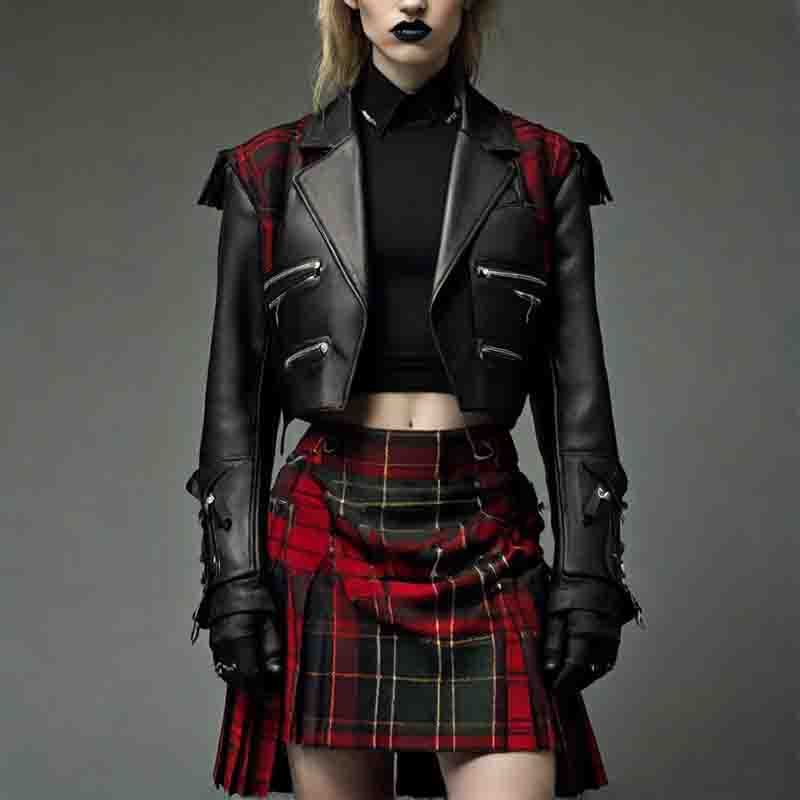
Leather jackets adorned with patches and studs, combat boots paired with tartan skirts, and Mohawk hairstyles are just a few examples of the eclectic mix of clothing, accessories, and hairstyles that define punk fashion.
While its roots may lie in the underground music scene of the 1970s, punk fashion continues to evolve and thrive in the modern era.
From the streets of Brooklyn to the runways of Paris, punk-inspired looks can be seen permeating mainstream culture, influencing everything from high fashion to streetwear.
Social media platforms have become breeding grounds for punk fashion enthusiasts, providing a platform for self-expression and community-building.
Styling Punk Fashion
For those looking to embrace the punk aesthetic, the key lies in fearless experimentation and a refusal to conform.
Mix and match vintage finds with contemporary pieces, layering textures and patterns to create a look that's uniquely yours.
Embrace DIY techniques like distressing and patching to add a touch of rebellion to your wardrobe, and don't be afraid to accessorize with chains, spikes, and statement jewelry.
Punk Fashion on the Runway
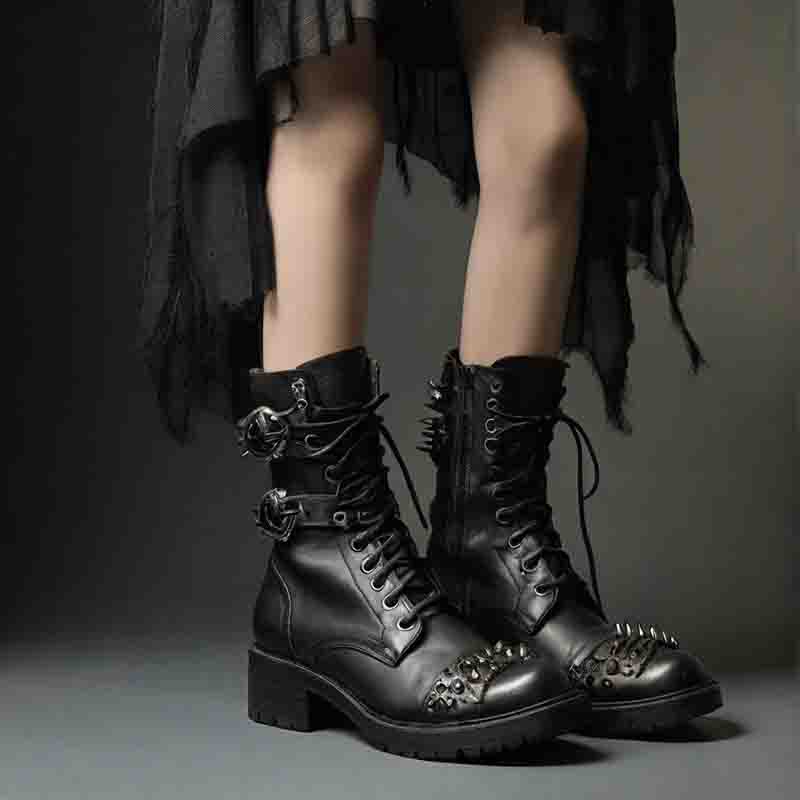
The DIY ethic of punk extends beyond clothing to music production, album artwork, and zine publishing, creating a thriving underground culture where creativity flourishes.
While punk fashion may have its roots in the underground, it has also found its way onto the world's most prestigious runways.
Designers like Alexander McQueen and Jean Paul Gaultier have incorporated punk elements into their collections, infusing high fashion with a dose of anarchic energy.
From safety pin-adorned couture gowns to leather-clad rebels stomping down the catwalk, punk fashion continues to inspire and captivate audiences around the globe.
Punk Fashion Photography
The raw, unfiltered energy of punk fashion is perfectly captured through the lens of punk fashion photographers.
From gritty black-and-white portraits to vibrant, in-your-face street shots, these photographers capture the essence of punk culture in all its rebellious glory.
The iconic images of punks jumping around in the mosh pit or defiantly turning the camera away remain as a stark visual memento of the sustained spirit of the movement.
Punk Fashion Vibes: Your Authentic Self
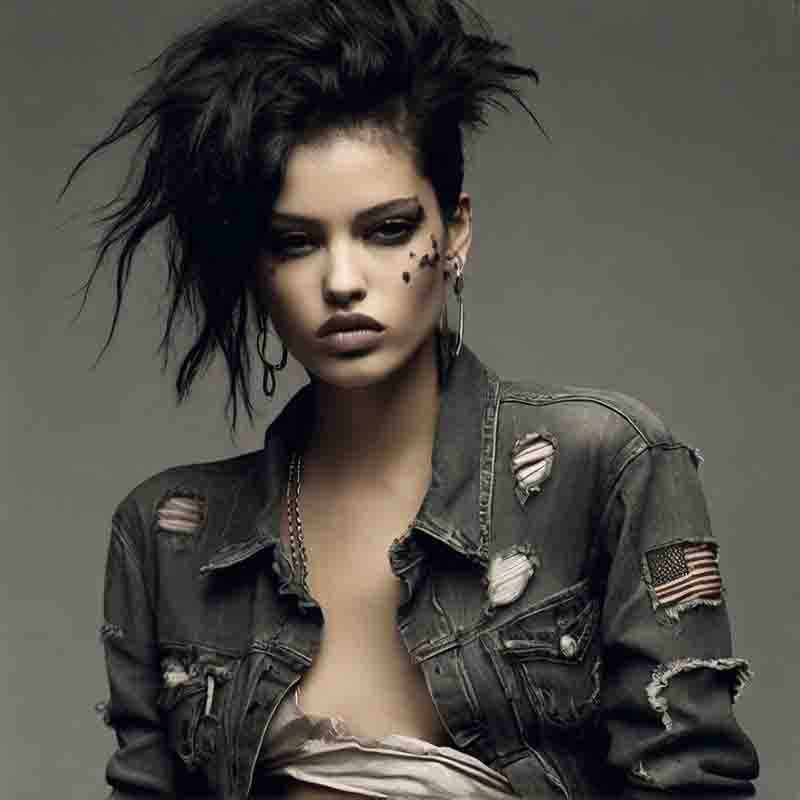
Punk fashion, which has its roots in the streets of London and New York City, retains a global footprint and continually attracts and encourages rebels, outsiders and outcasts.
Punk fashion is more than just a style; it's a vibrant and defiant expression of individuality and rebellion.
Leather jackets, studded accessories, and combat boots are staples of the punk wardrobe, reflecting a tough and rebellious attitude
The DIY ethic of punk extends beyond clothing to music production, album artwork, and zine publishing, creating a thriving underground culture where creativity flourishes.
-
Non-conformity: Punk fashion celebrates individuality and uniqueness. It's about embracing one's quirks and eccentricities rather than trying to fit in with the crowd. Punk individuals often eschew traditional fashion rules and trends in favor of expressing their own personal style.
-
Safety pins: Safety pins are a symbol of punk fashion, often used to fasten clothing together or as decorative embellishments. They represent the DIY ethos of punk, as well as the idea of using everyday objects in creative and unexpected ways.
-
Anarchy: Anarchy is a central theme in punk fashion, reflecting a desire to dismantle oppressive systems of power and authority. Punk individuals often incorporate anarchic symbols and slogans into their clothing as a form of political protest.
-
Leather jackets: Leather jackets are a staple of punk fashion, representing rebellion, toughness, and a sense of cool. They're often adorned with patches, studs, and other embellishments to personalize the look and make a bold statement.
-
Combat boots: Combat boots are another iconic element of punk fashion, symbolizing strength, resilience, and readiness for battle. They're a practical choice for navigating the urban landscape, as well as a fashion statement in their own right.
-
Mohawks: Mohawks are a distinctive hairstyle associated with punk fashion, characterized by a strip of hair running from the forehead to the back of the head, with the sides shaved or closely cropped. Mohawks are a bold and attention-grabbing look that reflects the rebellious spirit of punk.
-
Tartan: Tartan, or plaid, is a pattern commonly associated with punk fashion, particularly in the form of kilts, skirts, and trousers. It's a nod to punk's Scottish roots and adds a touch of rebellion and irreverence to any outfit.
-
Studded accessories: Studded accessories, such as belts, bracelets, and chokers, are a popular way to add edge and attitude to punk fashion. They're often DIYed using metal studs or spikes and can be customized to suit individual tastes.
-
Music-inspired: Music plays a central role in shaping punk fashion, with bands like the Sex Pistols, The Clash, and The Ramones serving as both icons and inspirations. Punk individuals often express their allegiance to their favorite bands through band t-shirts, patches, and other merchandise.
Beyond its aesthetic appeal, punk fashion carries a powerful message of social and political dissent. It's a form of resistance against the status quo, challenging oppressive systems of power and advocating for social change.
Revolt with Style: Punk Fashion Manifesto
Punk fashion was characterized by its DIY ethos, with individuals customizing their clothing with safety pins, patches, and studs.
Ripped jeans, leather jackets, and combat boots were staples of the punk wardrobe, reflecting a raw and edgy aesthetic.
As punk music gained popularity, so too did its fashion, eventually influencing mainstream culture and high fashion runways.
Despite evolving over the decades, punk fashion has remained a symbol of rebellion and individuality, continuing to inspire new generations of fashion rebels around the world.
Punk Fashion: FAQ
Are you curious about music, art, technology, fashion, lifestyle, and beer?
If so, then you need to subscribe to the free Likewolf newsletter.
100% privacy. When you sign up, we'll keep you posted.

Likewolf's Typewriter
Likewolf writes about music, art, technology, fashion, lifestyle, and beer
LikewolfVelvet And Leather
Modern-Day Vampire
